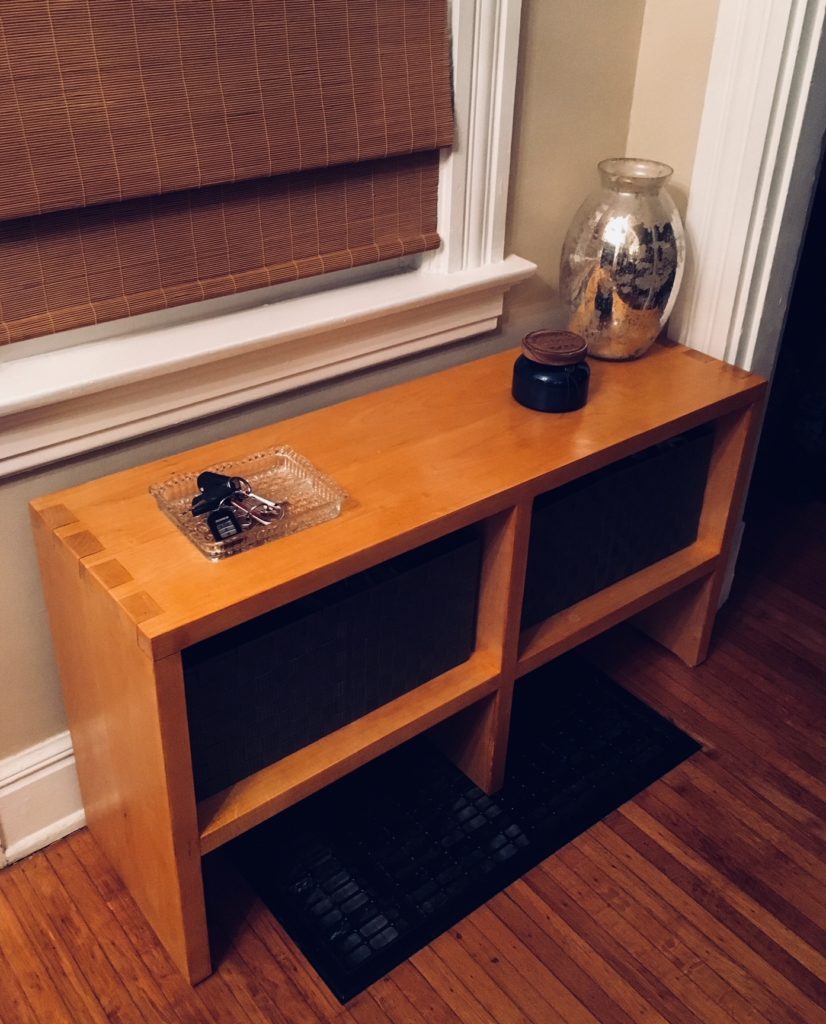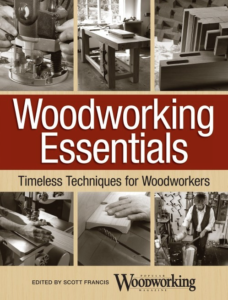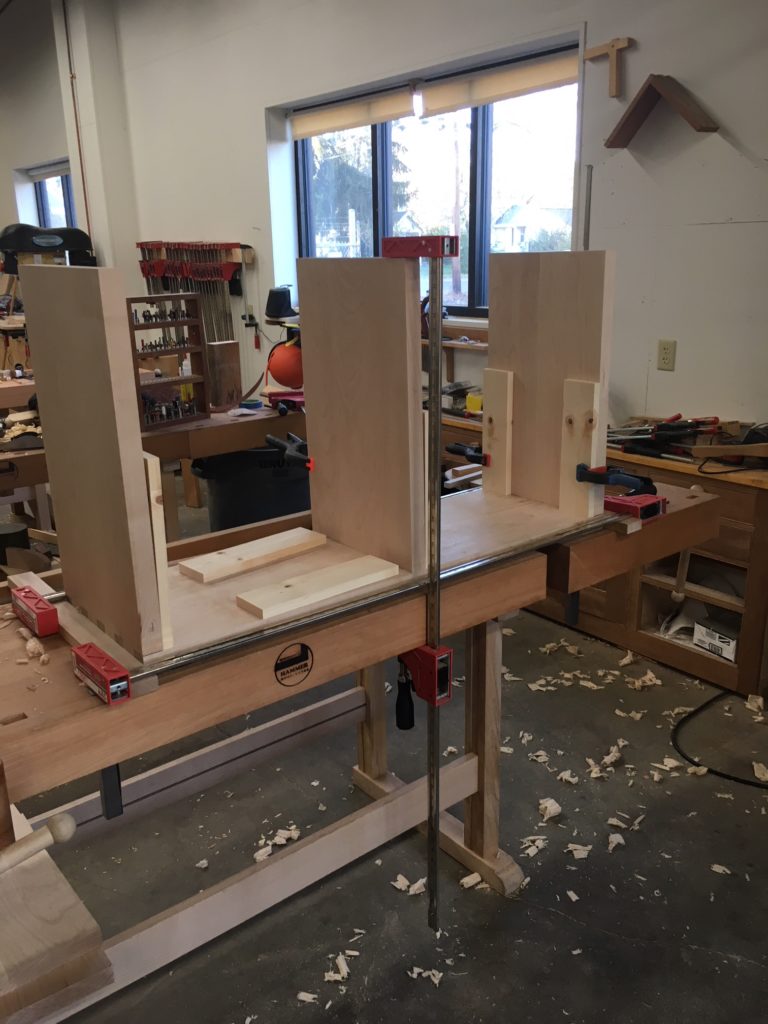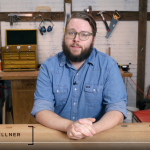We may receive a commission when you use our affiliate links. However, this does not impact our recommendations.
 There’s something to be said for just finishing a long term project. I’ve been working on a furniture build off and on since I first started at PW a few years ago. It was to be an entryway table that doubled as a place to store shoes and custom built to fit under a window yet over a heat return. I had grand plans for the piece that were above and beyond what I knew how to do. I was going to dovetail the ends, join the middle section with mortises and through-tenons, create stopped dados to house the shelves and build an egg crate system to store the shoes. All things I’d read about and understood on paper.
There’s something to be said for just finishing a long term project. I’ve been working on a furniture build off and on since I first started at PW a few years ago. It was to be an entryway table that doubled as a place to store shoes and custom built to fit under a window yet over a heat return. I had grand plans for the piece that were above and beyond what I knew how to do. I was going to dovetail the ends, join the middle section with mortises and through-tenons, create stopped dados to house the shelves and build an egg crate system to store the shoes. All things I’d read about and understood on paper.
And then I started learning to dovetail.
Needless to say, my project stalled. I built other things as I tried to amass the skills I needed to build my table – dovetailed boxes, toys and serving trays. I pecked away at my project a task at time. The lumber for the project wasn’t dimensioned, so I learned to use the jointer and planer. I learned to use handplanes during the process, and learned the basics of sharpening and maintenance. I learned to mark out dovetails, saw them and chop them by hand. I learned to use marking gauges, chisels and dovetail saws. And finally, finally… my table started to come together.
Ultimately I changed my mind on some of the things I hoped to accomplish with the table. Rather than using mortises and through-tenons to join the middle, I learned to use a Festool Domino. And rather than create an egg crate shelving system, I opted to insert bins to hold the shoes (it became obvious that the storage would be much more functional that way and that my original idea was based mostly on aesthetics alone).
The table I built isn’t what I originally envisioned, but it became something that I really like. There are several skills I wanted to learn through the course of the build that I put on hold. But I’m looking toward new projects that I want to do to accomplish that. The design changes were as much a part of my learning process as the skills I learned themselves. By digging in and just building a piece of furniture, I learned a lot about the thought that goes into a furniture design – the space the furniture will occupy, its function, possible variations in construction.
I’ll admit that I unwittingly set out to learn things the hard way. The wood was hard, the joinery techniques were more advanced, and I tried to design a piece rather than follow any sort of tested plan. But in the end it was a great project that allowed me to acquire and practice skills over a period of time, all while building smaller projects as part of what I was trying to learn. The long way around? Maybe so. But I had fun, know a lot more than I did, and I have a place to put my shoes. Now, I’m ready to build more stuff and learn new things.
 “Woodworking Essentials” was the first book I edited for PW. It proved to be a great crash course that helped me 1) learn enough to start making a mess in the shop; 2) go back and figure out how what went wrong and fix it or do it the right way. I highly recommend the book, which is available at ShopWoodworking.com.
“Woodworking Essentials” was the first book I edited for PW. It proved to be a great crash course that helped me 1) learn enough to start making a mess in the shop; 2) go back and figure out how what went wrong and fix it or do it the right way. I highly recommend the book, which is available at ShopWoodworking.com.
Here are some supplies and tools we find essential in our everyday work around the shop. We may receive a commission from sales referred by our links; however, we have carefully selected these products for their usefulness and quality.











Sometimes done is better than perfect. Especially when you’re building confidence.
The finished piece looks great.